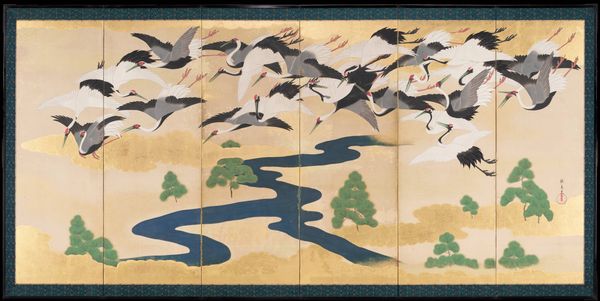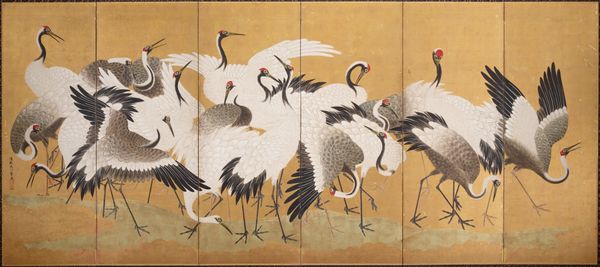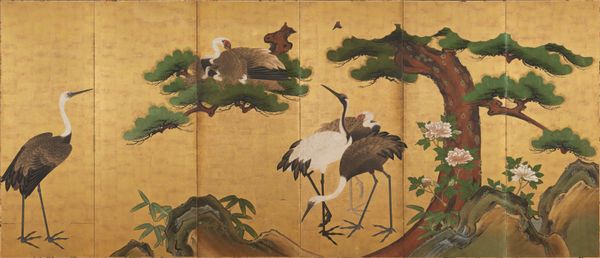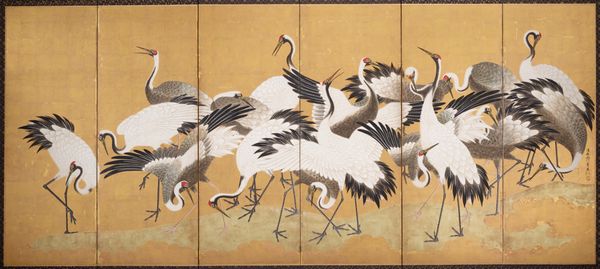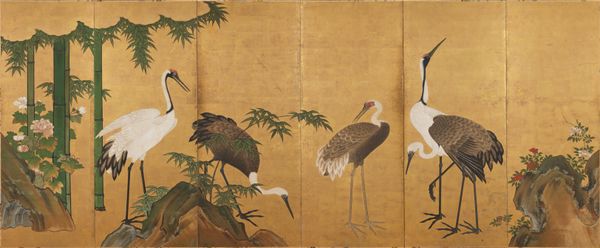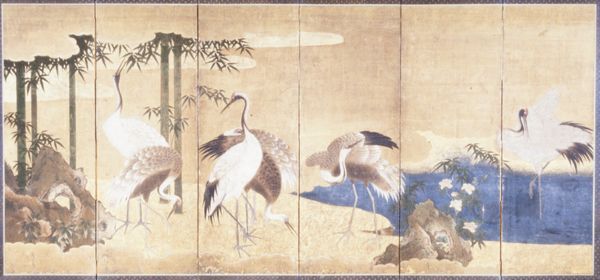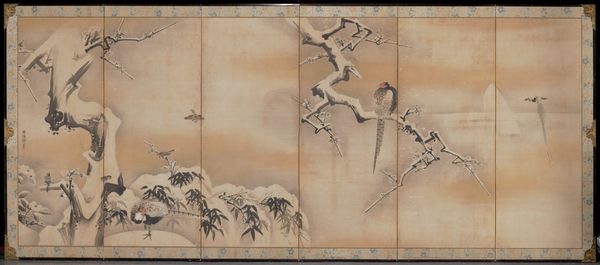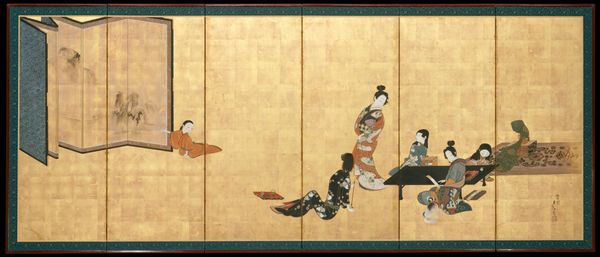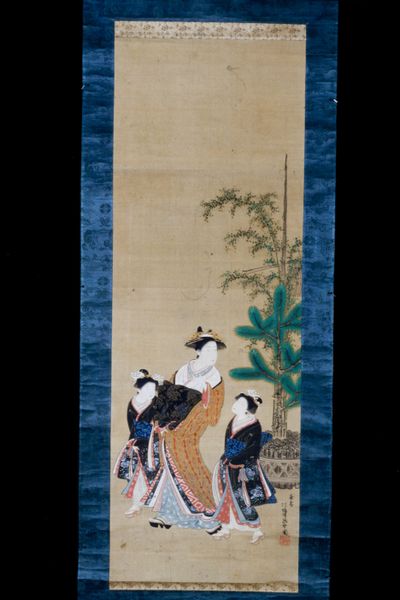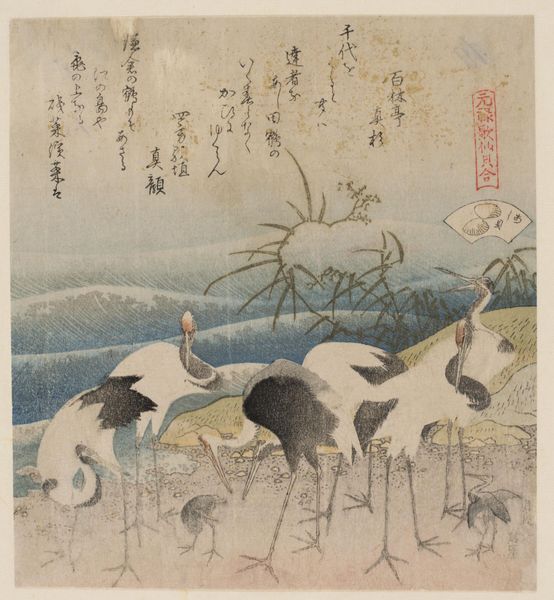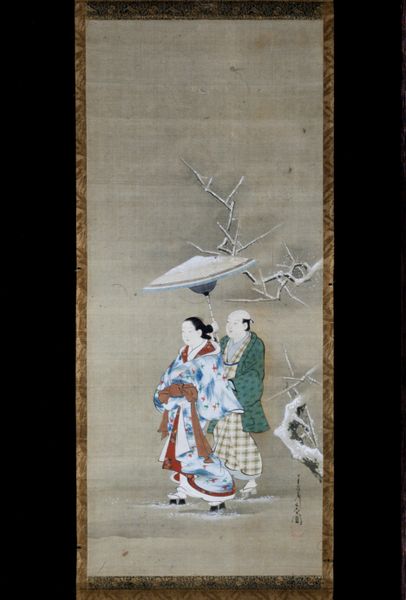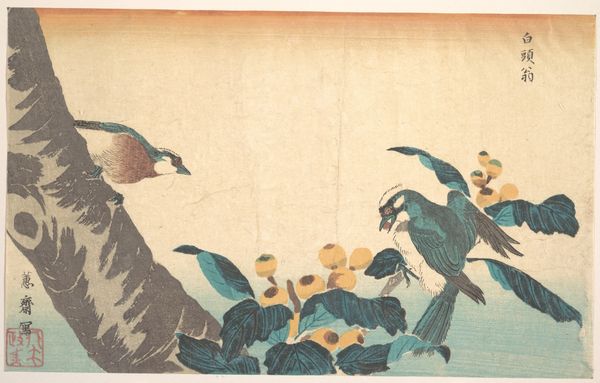![Cranes and Pines [left of a pair] by Yamamoto Sodō](/_next/image?url=https%3A%2F%2Fd2w8kbdekdi1gv.cloudfront.net%2FeyJidWNrZXQiOiAiYXJ0ZXJhLWltYWdlcy1idWNrZXQiLCAia2V5IjogImFydHdvcmtzLzU4YWFkMTEwLWI2NWItNDliYi05OTcwLWQ1YTgzNzcwOGIxYS81OGFhZDExMC1iNjViLTQ5YmItOTk3MC1kNWE4Mzc3MDhiMWFfZnVsbC5qcGciLCAiZWRpdHMiOiB7InJlc2l6ZSI6IHsid2lkdGgiOiAxOTIwLCAiaGVpZ2h0IjogMTkyMCwgImZpdCI6ICJpbnNpZGUifX19&w=3840&q=75)
tempera, painting, print, ink, pendant
#
tempera
#
painting
# print
#
asian-art
#
landscape
#
ukiyo-e
#
folk art
#
figuration
#
mural art
#
ink
#
folk-art
#
orientalism
#
decorative-art
#
decorative art
#
realism
#
pendant
Dimensions: 60 7/8 × 130 1/8 in. (154.62 × 330.52 cm) (image)67 3/8 × 136 3/8 × 5/8 in. (171.13 × 346.39 × 1.59 cm)
Copyright: Public Domain
Editor: This gorgeous piece, "Cranes and Pines," dates back to the 19th century and is attributed to Yamamoto Sodo. It features tempera and ink. The depiction of cranes is very captivating. They appear so full of life and social activity against a soft backdrop. What do you see in this work, especially from a historical standpoint? Curator: It's fascinating how this work intersects with Japan's socio-political landscape during the late Edo and early Meiji periods. Pieces like this screen served a public role. Notice how the artist, Yamamoto Sodo, has rendered these auspicious symbols of longevity and marital bliss. What kind of audience do you imagine this artwork speaking to? Editor: Well, given its presence in the Minneapolis Institute of Art, it reaches a contemporary audience. But considering its creation, wouldn’t it mostly appeal to the rising merchant class or the educated elite interested in signaling status and cultural awareness through decorative arts? Curator: Precisely! These folding screens were not just beautiful objects, but powerful signifiers. Their presence in domestic spaces proclaimed cultural refinement and engagement with classical motifs. These screens were commissioned and displayed to subtly shape the public image of their patrons. It makes me wonder about the politics of display. Who had access to such imagery and what impact did it have? Editor: So, it's not just about aesthetics but also about how art actively shaped societal hierarchies. I hadn't considered how limiting its audience made a statement of wealth, which in itself shifts the artistic meaning! Curator: Exactly! It enriches the layers of understanding. Art, in this context, wasn't simply a passive reflection of culture but an active participant in constructing social narratives. Editor: That’s such a crucial perspective; seeing beyond the visual into how cultural forces played a role in this piece. I definitely see the painting in a new light! Curator: And hopefully it sparks further inquiry into how museums and art institutions continue this act of framing art.
Comments
No comments
Be the first to comment and join the conversation on the ultimate creative platform.
